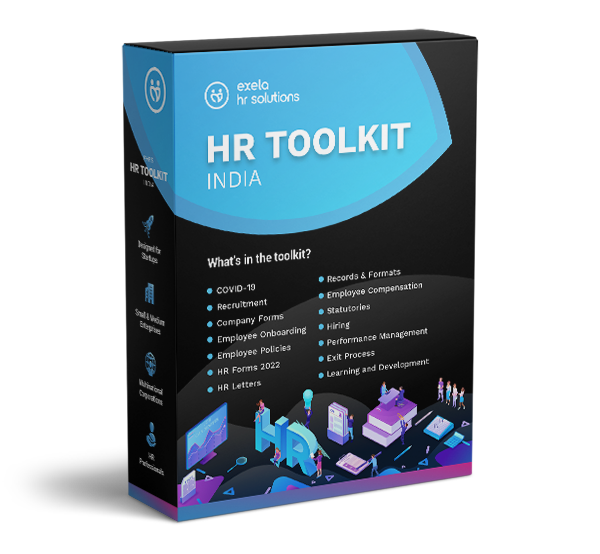
In the fast-paced and ever-evolving world of recruitment, organizations face myriad challenges and opportunities. Attracting, hiring, and retaining top talent is paramount for business success. However, achieving this goal efficiently and cost-effectively can be a daunting task, especially in the face of changing labor markets and the increasing complexities of the recruitment process.
Traditional recruitment methods, characterized by manual processes, limited data utilization, and high administrative overhead, are often time-consuming and costly. They can lead to increased time-to-fill job vacancies, ballooning cost-per-hire figures, and a host of other inefficiencies that erode an organization's competitive edge. As such, there is a pressing need for innovation and change in the recruitment process.
This blog explores the pivotal role that technology plays in revolutionizing the recruitment landscape and how its inclusion in Recruitment Process Outsourcing (RPO) can translate into substantial cost savings for organizations. Whether you're a business operating in the bustling tech hubs of Bengaluru or Silicon Valley or anywhere in between, the principles discussed in this blog are universal, and the benefits of tech-driven RPO can be reaped on both sides of the globe. Dive in below to learn more.
The Benefits of Technology in RPO
In Recruitment Process Outsourcing (RPO), integrating technology can be a game-changer for organizations seeking to optimize their recruitment processes. The advantages of harnessing technology in the RPO arena are manifold and extend well beyond mere cost savings. Let's explore these benefits in greater detail:
-
Streamlining the Recruitment Process:
- Automation: Technology enables the automation of numerous administrative and repetitive tasks in recruitment. This includes resume screening, interview scheduling, and communication with candidates. By automating these processes, RPO providers can significantly reduce the time and effort required for these routine tasks, allowing HR professionals to focus on strategic activities.
- Workflow Efficiency: Technology can establish structured workflows that ensure a seamless and standardized recruitment process. This consistency is crucial for reducing errors, eliminating bottlenecks, and enhancing the overall efficiency of recruitment.
-
Reducing Time-to-Fill and Cost-per-Hire:
- Faster Candidate Sourcing: Technology provides the ability to access a broader pool of candidates through online job boards, social media, and other digital platforms. This extended reach accelerates the sourcing process and decreases the time it takes to identify suitable candidates.
- Improved Matching: Advanced algorithms and artificial intelligence (AI) tools can analyze resumes and candidate profiles to identify the best-fit candidates for specific roles. This smart matching results in quicker and more accurate candidate selection, reducing the time to fill vacant positions.
- Cost-efficient Sourcing: By using technology to target candidates more precisely and efficiently, RPO providers can reduce advertising and marketing costs. This targeted approach ensures that job postings reach the right audience, reducing the need for expensive, broad-spectrum recruitment campaigns.
-
Enhancing Candidate Sourcing and Selection:
- Data-Driven Insights: Technology allows for the collection and analysis of vast amounts of data related to recruitment. These insights can inform strategic decision-making, helping RPO providers identify the most effective sourcing channels and recruitment strategies.
- Improved Candidate Experience: Technology can enhance the overall candidate experience by providing user-friendly application processes, quick feedback, and clear communication. A positive candidate experience attracts top talent and increases the likelihood of referrals and repeat applications.
-
Improving Data-Driven Decision Making:
- Predictive Analytics: Technology facilitates the use of predictive analytics to forecast future hiring needs, talent shortages, and workforce trends. This data-driven approach enables organizations to make more informed and proactive recruitment decisions, reducing reactive hiring costs.
- Performance Metrics: By utilizing technology, RPO providers can track and measure various recruitment metrics, such as time-to-fill, cost-per-hire, and quality-of-hire. This data empowers organizations to continuously optimize their recruitment strategies and adapt to changing market conditions.
Technology Tools and Solutions for RPO
In the quest to modernize the recruitment process, organizations and RPO providers have at their disposal an array of powerful technology tools and solutions that can drive efficiency, improve outcomes, and ultimately save money. These tools and solutions are essential components of tech-driven RPO strategies. Let's explore some of the key technology tools and solutions that are revolutionizing the recruitment landscape.
-
Applicant Tracking Systems (ATS):
- Streamlining Data Management: ATS software helps in efficiently managing candidate data, resumes, and applications. It simplifies the process of sorting, storing, and retrieving candidate information, reducing the time spent on administrative tasks.
- Automated Workflows: ATS systems enable the creation of structured recruitment workflows. They automate processes like job posting, candidate screening, and interview scheduling, ensuring a smooth and consistent recruitment journey for both candidates and HR teams.
- Data Analytics: Many modern ATS platforms offer analytics and reporting features, allowing organizations to gain valuable insights into their recruitment performance and make data-driven decisions.
-
Artificial Intelligence (AI) and Machine Learning (ML) in Recruitment:
- Smart Candidate Matching: AI and ML algorithms can automatically analyze candidate profiles and job requirements to automatically suggest the best-fit candidates. This not only accelerates the selection process but also improves the quality of hires.
- Resume Screening: AI-powered resume screening tools can identify key qualifications and experience in resumes, reducing the time it takes to review large numbers of applications and ensuring that only the most relevant candidates proceed.
- Chatbots and Virtual Assistants: AI-driven chatbots and virtual assistants can handle initial candidate inquiries, schedule interviews, and even conduct initial assessments, freeing up human recruiters for more strategic tasks.
-
Video Interviewing and Assessment Tools:
- Remote Hiring: Video interviewing tools enable remote interviews, making it easier to connect with candidates regardless of geographical location. This can significantly reduce travel costs and the time associated with in-person interviews.
- Assessment Tools: These platforms can include skills and personality assessments to gauge a candidate's suitability for a role. By automating the assessment process, RPO providers save time and reduce subjectivity in candidate evaluation.
-
Online Skills and Personality Assessments:
- Objective Evaluation: Online assessments provide a standardized and objective way to evaluate a candidate's skills and personality traits. This can lead to more accurate hiring decisions and cost savings by avoiding mismatches.
- Scalability: These tools are highly scalable, allowing RPO providers to assess a large number of candidates simultaneously, reducing the time required to identify the most qualified individuals.
-
Data Analytics and Reporting Tools:
- Performance Metrics: Data analytics tools in recruitment gather and analyze a wide range of metrics, including time-to-fill, cost-per-hire, and source effectiveness. This data-driven approach helps organizations continually optimize their recruitment strategies.
- Benchmarking: RPO providers can benchmark their performance against industry standards and competitors, enabling them to identify areas where they can save costs and improve outcomes.
Also Read: Effective Recruitment Strategies for Business Success
How tech integration helps cut costs in recruitment
One of the primary objectives of incorporating technology into the Recruitment Process Outsourcing (RPO) model is to achieve substantial cost savings. By leveraging technology, RPO providers and organizations can optimize their recruitment processes and reduce various expenses. Here's a closer look at how technology translates into cost savings in the context of RPO:
-
Reduction in Manual Administrative Tasks:
- Time and Labor Savings: Automation of administrative tasks, such as data entry, resume screening, and interview scheduling, significantly reduces the time and effort required by HR professionals. This reduction in manual labor not only speeds up the recruitment process but also lowers labor costs.
- Consistency: Automated processes ensure consistency in recruitment activities, reducing the risk of errors and minimizing the need for corrective actions that can add to costs.
-
Improved Matching and Hiring Accuracy:
- Faster Selection: AI-driven candidate matching tools identify the most suitable candidates for specific roles, accelerating the selection process. This reduction in time-to-fill contributes to cost savings by minimizing the duration of job vacancies.
- Higher Quality Hires: By using technology to assess and match candidates with precision, RPO providers can ensure that hired individuals are a better fit for their roles, reducing the risk of costly turnovers and subsequent rehiring expenses.
-
Lower Advertising and Recruitment Marketing Costs:
- Targeted Job Postings: Technology allows organizations to identify the most effective job posting platforms and channels, ensuring job advertisements reach the right audience. This targeted approach reduces unnecessary advertising costs.
- Enhanced Employer Branding: Through social media, employer review platforms, and other digital channels, technology can help build a positive employer brand, attracting talent organically and reducing the need for costly recruitment marketing campaigns.
-
Efficient Onboarding and Training Processes:
- Automation of Onboarding: Technology streamlines the onboarding process, ensuring new hires can become productive members of the organization more swiftly. Reduced onboarding times mean that organizations can realize the ROI on new hires more quickly.
- Reduced Training Costs: AI-driven training tools and e-learning platforms can help employees acquire new skills more efficiently, reducing training-related costs and time investments.
Conclusion
In the recruitment landscape, technology in Recruitment Process Outsourcing (RPO) is the key to saving costs and streamlining processes. With tools like automation, AI, and data analytics, RPO providers are achieving more efficient and precise hiring, reducing both immediate and long-term expenses.
Exela HR Solutions leads this transformation. Our expertise in AI-driven matching, onboarding, and data management results in substantial cost savings, enhanced workforce quality, and productivity.
In this competitive landscape, technology-driven RPO isn't just an option; it's a necessity. Embrace it with Exela HR Solutions to save costs and secure your organization's future.
Get Exela HR Solutions now!
DISCLAIMER: The information on this site is for general information purposes only and is not intended to serve as legal advice. Laws governing the subject matter may change quickly, and Exela cannot guarantee that all the information on this site is current or correct. Should you have specific legal questions about any of the information on this site, you should consult with a licensed attorney in your area.





